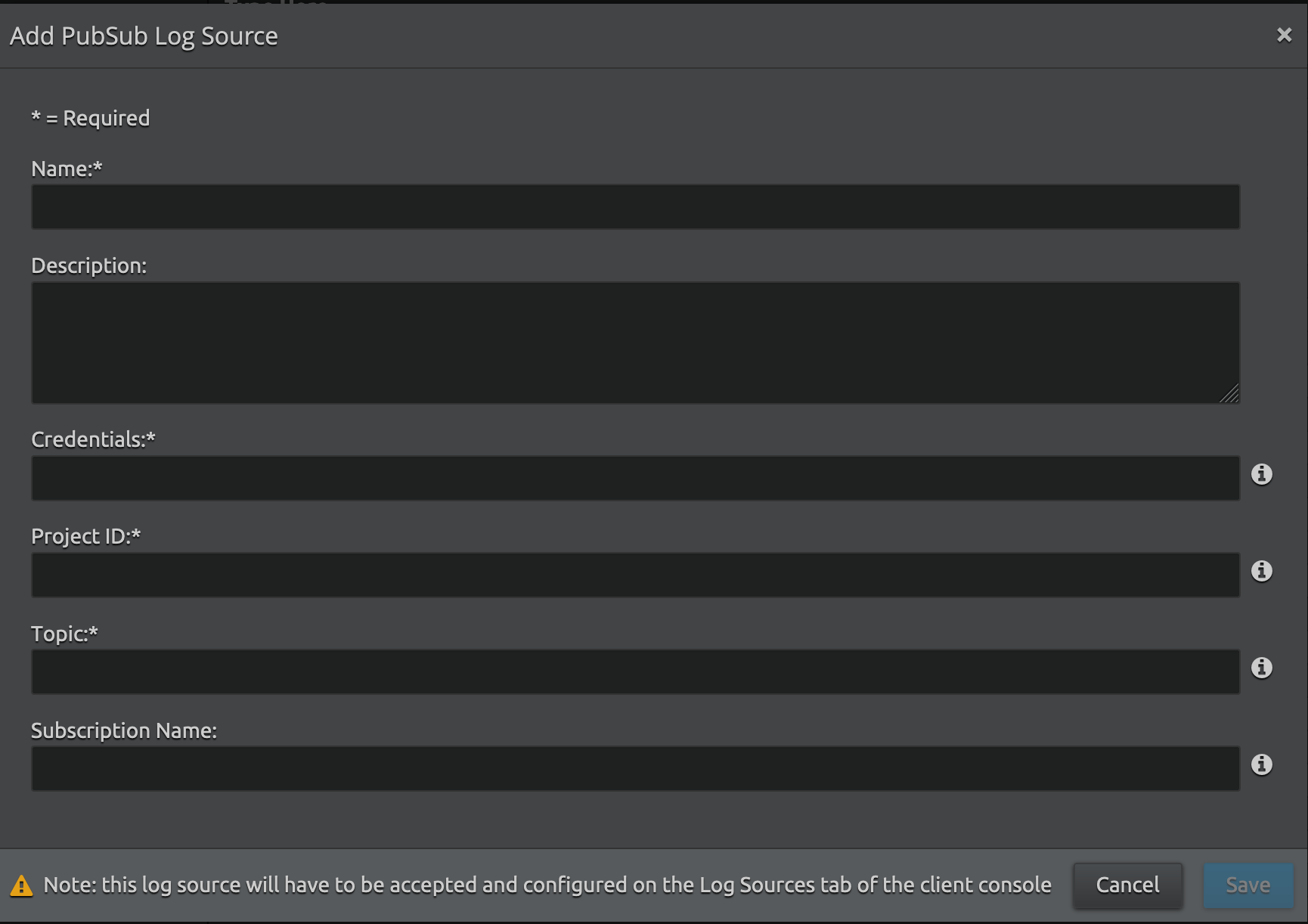(LRCloud Only) Initialize the PubSub Beat Using Cloud to Cloud Collection
This document explains how to initialize the PubSub Beat using cloud-to-cloud collection. This feature is available only to LRCloud customers.
Prerequisites
Before initializing the PubSub Beat collection from O365, do the following:
- Make sure that the customer is an LRCloud customer and has their environment hosted.
- Check if the Open Collector has been installed in the customer's LRCloud environment on a separate instance. If not, an Open Collector instance must be requested via a support case.
- Ensure that the Open Collector log source has been accepted and configured for log source virtualization.
To collect logs from any GCP service, enable the required services in the GCP portal and make sure that there is a topic and one subscription created to receive the logs.
Apply the Log Source Virtualization Template
- Log in to the Client Console in Cameyo.
- Click Deployment Manager from the toolbar.
- Click the Log Sources tab.
- Double-click the required Open Collector Log Source (such as, {instance}-opencollector.c.e3-hub-753dd405.internal Open Collector).
The Log Message Source Properties window appears. - Click the Log Source Virtualization tab.
- If not checked, select the Enable Virtualization check box.
- Click Create Virtual Log Sources.
The Create Virtual Log Sources dialog box appears. - In the Virtual Log Sources menu, check the Action check box corresponding to "Syslog - Open Collector - GCP Pub Sub" and "Syslog - Open Collector - PubSubBeat Heartbeat" log source types.
- Click Save.
The Virtual Log Source(s) created prompt appears. - Click Ok.
- Click Apply.
- Click Ok.
The new Log Sources will appear in the grid as children of your parent log source. - Click the System Monitors tab.
- Select the Action check box corresponding to the (customerid)-dpawc agent.
- Right-click the selection, click Actions and then click Service Restart.
Initialize the Beat
- Log in to the Web Console as a Restricted Administrator User.
- On the top navigation bar, click the Administration icon and select Cloud Log Collection.
- At the top of the Cloud Log Collection page, click New Log Source.
The New cloud log collection dialog box appears. - Select the PubSub - Open Collector tile.
The Add PubSub Log Source window appears. Enter the following details:
Setting
Description
Name Enter the name for this log source. Description (Optional) Enter a description for this log source. Credentials Enter the contents of the JSON credential file. Project ID Enter the Project ID of your project from GCP. Topic Enter the topic name from GCP. Enter only the portion that appears after "topics\" (for example, if your GCP console listed the topic name as "projects/datacollector-0000/topics/sample-topic", you would enter sample-topic).
Subscription Name Enter the subscription name from GCP. Enter only the portion that appears after "subscriptions\" (for example, if your GCP console listed the subscription name as "projects/datacollector-0000/topics/sample-subscription", you would enter sample-subscription).
Click Save.
- Log in to the Client Console in Cameyo.
- Click Deployment Manager from the toolbar.
- Click the System Monitors tab.
- Select the Action check box corresponding to the dpwac agent.
- Right-click the selection, click Actions and then click Service Restart.
A new log source is created with the provided information based on the virtualized log source that was already created. Collection should start automatically in few minutes.
The Open Collector hosts the log sources. It is recommended to create a new host entity and move the log source to the new host which is done in the log source properties screen and not from the log source grid.
Default Config Values for PubSub Beat
Setting | Field Name | Default Value |
|---|---|---|
| 1 | project | User Provided |
| 2 | HeartbeatInterval | 5m0s |
| 3 | HeartbeatDisabled | false |
| 4 | CredentialsFile | User Provided |
5 | Topic | User Provided |
| 6 | Subscription.name | User Provided |
| 7 | json.enabled | true |
| 8 | json.add_error_key | true |
| 9 | subscription.Create | true |

